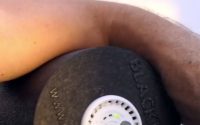How Manual Therapy Sparks Tissue Restoration
When you undergo manual therapy, such as deep friction or fascial manipulation, it’s not uncommon to feel soreness in the treated area for about 24 hours afterward. But this isn’t your typical pain; it’s a signal that an essential inflammatory process is underway.
This inflammation is believed to be sparked by the manipulation of a molecule called hyaluronic acid (HA) in your body’s connective tissues. HA was once considered nothing more than a space-filling substance, but recent research has unveiled its extraordinary role in maintaining tissue health.
A review conducted by Antonio Steccol and colleagues aim to explain whether manual and physical therapies can catalyze an inflammatory process driven by HA.
HA is like the body’s natural lubricant, ensuring your connective tissues stay elastic and hydrated. It comes in various molecular sizes, with high-molecular-weight HA (HMW HA) being responsible for tissue hydration. When inflammation strikes, this balance is disrupted, leading to the production of smaller HA molecules, including medium-molecular-weight HA (MMW HA) and low-molecular-weight HA (LMW HA).
The Inflammatory Cascade:
Inflammation isn’t necessarily a bad thing; it’s your body’s way of healing itself. When mechanical stresses, like those applied during manual therapy, or other factors trigger inflammation, it kickstarts a cascade of events. Free radicals are generated within the inflamed tissues, and when they interact with HA, it results in the creation of HA fragments.
These smaller HA fragments play a crucial role in the inflammatory process. They can stimulate the release of various inflammatory mediators, such as reactive oxygen species (ROS), cytokines, chemokines, and enzymes like hyaluronidase. This cascade of events not only amplifies the inflammatory response but also recruits white blood cells to help with tissue repair.
Inflammatory Impact:
HA fragments, particularly those with a molecular size of ≤ 500 kDa, have proinflammatory effects. They can stimulate the expression of proinflammatory genes and cytokines, further intensifying the inflammatory response. This might explain why patients often experience peak soreness about 12 hours after manual therapy.
Interestingly, smaller HA fragments can also have anti-inflammatory properties, depending on their size. They can inhibit the activation of certain inflammatory pathways, reducing inflammation and promoting healing. It’s like a built-in feedback system, helping your body balance the inflammatory response.
Restoration Process:
As the inflammatory cascade progresses, the HA fragments are eventually broken down and drained from the treated tissue via the lymphatic system. Most of them find their way to the lymph nodes, where they are cleared from the body. This process helps explain why the soreness typically subsides within 24 to 48 hours.
The Fascinating Role of Temperature:
Temperature also plays a part in this intricate dance of HA and inflammation. Higher temperatures reduce HA viscosity, making it less sticky and more mobile. Conversely, lower temperatures increase HA viscosity, making it stickier and more resistant. This temperature-driven change can influence muscle stiffness, range of motion, and pain perception.
The Benefits of Manual Therapy:
Manual therapies like deep friction and fascial manipulation are capable of catalyzing this HA-driven inflammatory process. While the immediate result might be soreness, it ultimately leads to improved tissue health and mobility. The soreness is a sign that your body is actively healing itself.
High-intensity therapies, such as shockwave therapy, take it a step further. They not only warm up the treated area but also fragmentize HA, which catalyzes a more intense inflammatory process. This results in the drainage and metabolization of excessive HA, ultimately restoring the correct HA amount and structure in the area.
Conclusion:
In summary, soreness after manual therapy isn’t just discomfort; it’s a vital part of your body’s healing process. The inflammation triggered by manual therapy helps restore the normal physiology of the treated area. While the duration of post-treatment soreness varies among individuals, understanding this process is crucial for both therapists and patients.
It’s important to note that suppressing this specific inflammatory response with non-steroidal anti-inflammatory drugs may not be the best approach, as it hinders the natural healing process. Instead, we should embrace the soreness as a sign that our body is actively working to restore itself.
While more research is needed to fully understand the intricacies of this phenomenon, it’s clear that manual therapy has a significant impact on our body’s ability to heal and recover.

